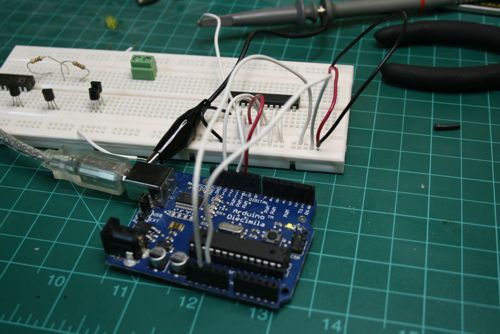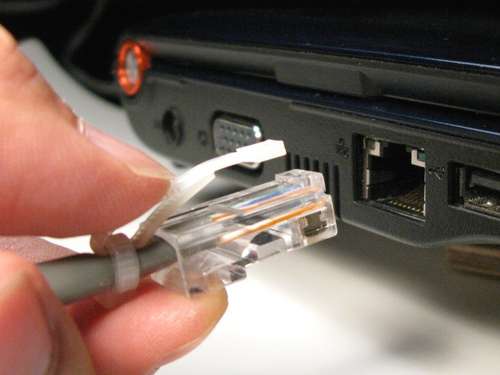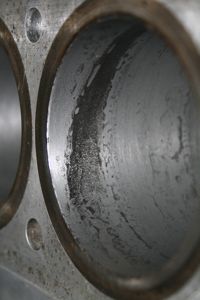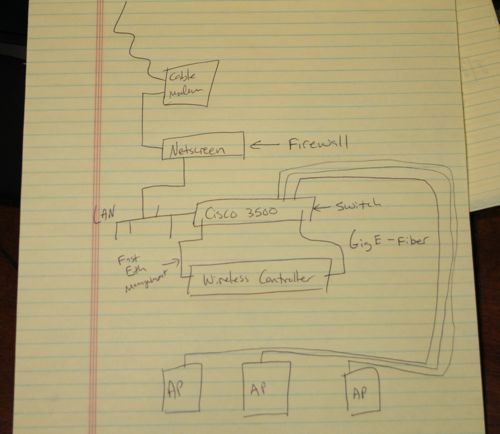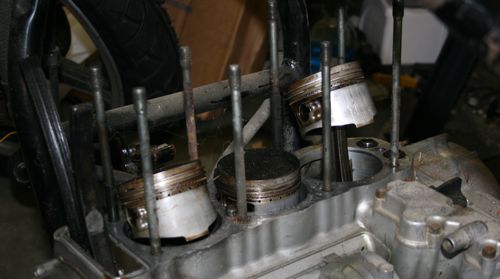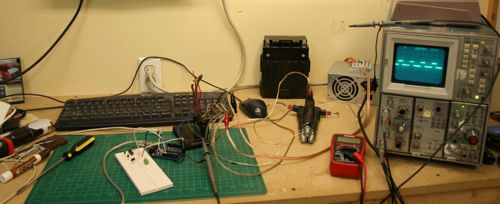
Arduino, EDIS-6, GSXR Coils/spark plugs, PC lab power supply and my monster O-scope
Despite my lack of piston rings, I’m still moving on my project bike. I picked up a set of three GSXR coils for about $10, and decided to test them out with a ford EDIS-6 ignition controller. The EDIS is a stand alone electronic igntion – but it responds to timing controls if/when the main ECU feels like talking to it. If there is a communications failure with the ECU, it drops into a basic 10 degree before top dead center limp home mode. It also has three ignitors built in.
The EDIS coil is literally a brick. I didn’t really want to mount it on my bike or hack up a set of ignition wires to make it work. Coil on Plug (COP) solves a few problems for me: no brick, no wires and no exposed second coil terminal to seal off. I got the idea to test this setup from another EDIS COP test rig.
To test the EDIS, you need some sort of VR sensor input. You can mechanically mount the missing tooth sprocket or just simulate the output. I rigged up a simple test using pin 9 of my Arduino with the following code:
int Count = 0;
void setup(){
}
void loop()
{
if(Count == 35){
analogWrite(9,0); // perform a 0 write to keep timing for missing tooth #36
Count = 0;
} else {
Count++;
}
analogWrite(9, 128); // analogWrite values from 0 to 255
}
This just sends out 35 pulses and skips the 36th to emulate the missing tooth. The output is 5v, so you have to use a voltage divider to rig the ground line to the VR- input on the EDIS module to get it to 2.5v. (a pair of 1k resistors does the trick). I actually wrote some nicer code for this test – maybe I’ll tweak it for later on. If you want to know more about how the arduino does PWM, check out this page.
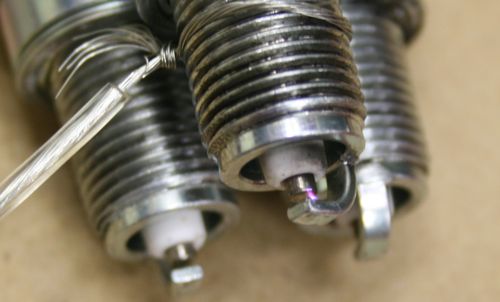
I was worried about sending a square wave to the VR input, but figured I try it just for the hell of it. Sure, I could rig up a conditioner circuit or use one of the many Arduino sine examples (most want a DAC tho) but the idea was to see if the coils would actually fire – and they did so I didn’t even have to try that hard. Still, it was fantastic to see all the coils fire perfectly – and it gave me an excuse to clear off my cluttered work bench.
